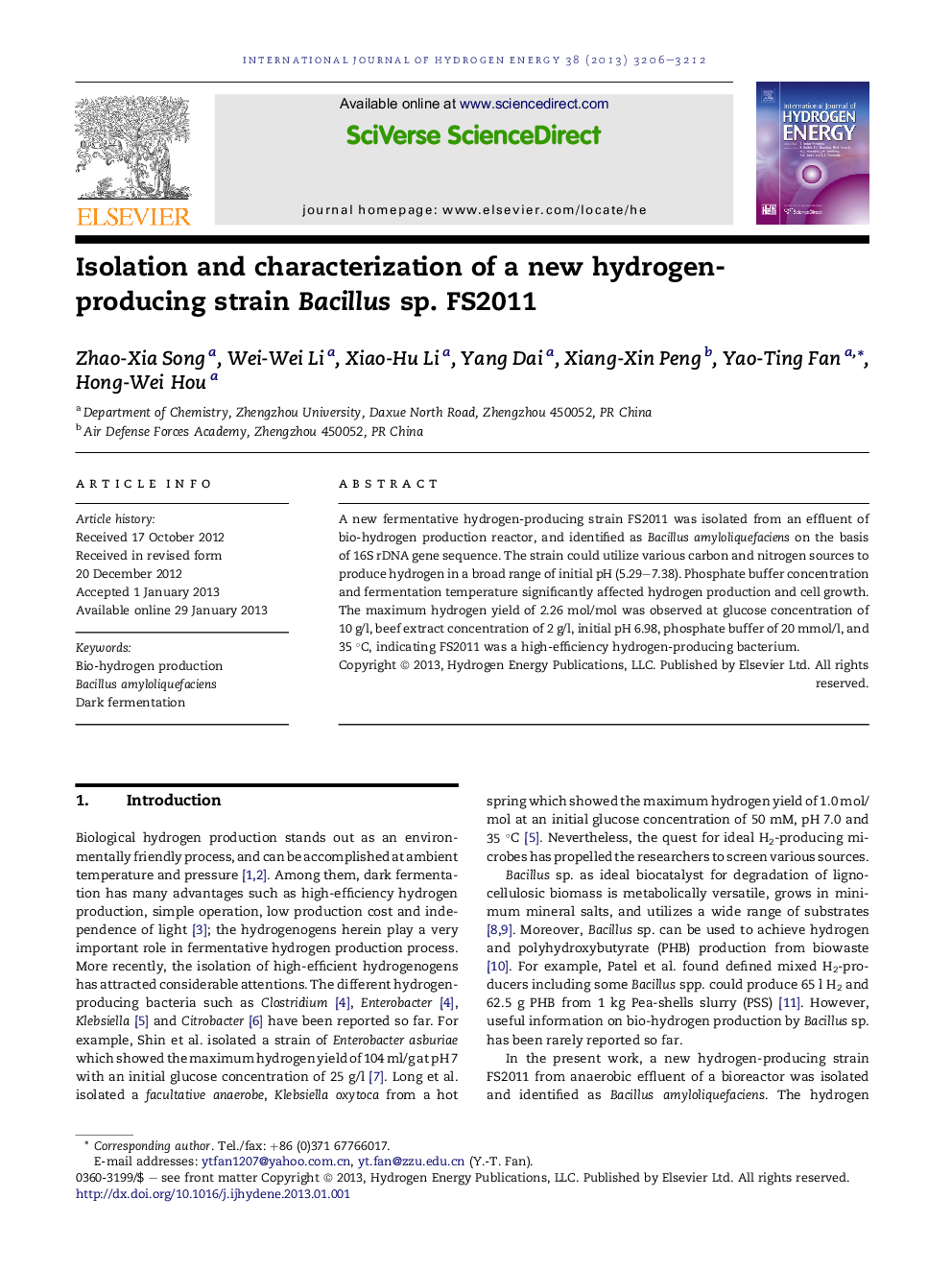| Article ID | Journal | Published Year | Pages | File Type |
|---|---|---|---|---|
| 1275735 | International Journal of Hydrogen Energy | 2013 | 7 Pages |
A new fermentative hydrogen-producing strain FS2011 was isolated from an effluent of bio-hydrogen production reactor, and identified as Bacillus amyloliquefaciens on the basis of 16S rDNA gene sequence. The strain could utilize various carbon and nitrogen sources to produce hydrogen in a broad range of initial pH (5.29–7.38). Phosphate buffer concentration and fermentation temperature significantly affected hydrogen production and cell growth. The maximum hydrogen yield of 2.26 mol/mol was observed at glucose concentration of 10 g/l, beef extract concentration of 2 g/l, initial pH 6.98, phosphate buffer of 20 mmol/l, and 35 °C, indicating FS2011 was a high-efficiency hydrogen-producing bacterium.
► A new strain FS2011 was isolated and identified as Bacillus sp. by 16S rDNA. ► It could utilize various types of C and N sources to produce H2 at pH 5.3–7.4. ► Phosphate buffer and temperature importantly affected H2 yield and cell growth. ► The maximum H2 yield of 2.26 mol/mol occurred at 10 g/l glucose, pH 7.0 and 35 °C. ► The strain is a preponderant hydrogenogen compared with literature data.
